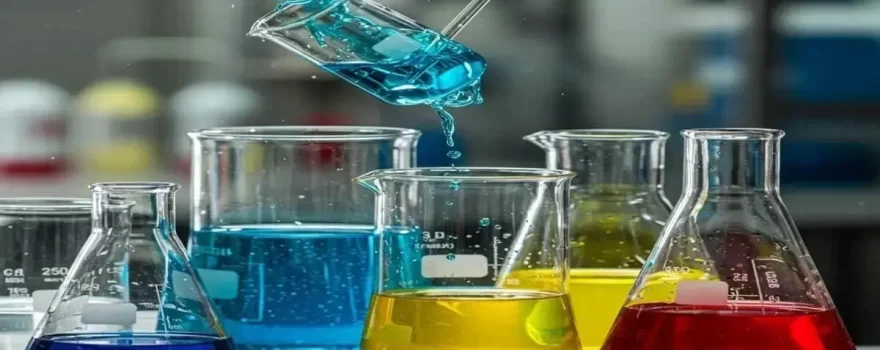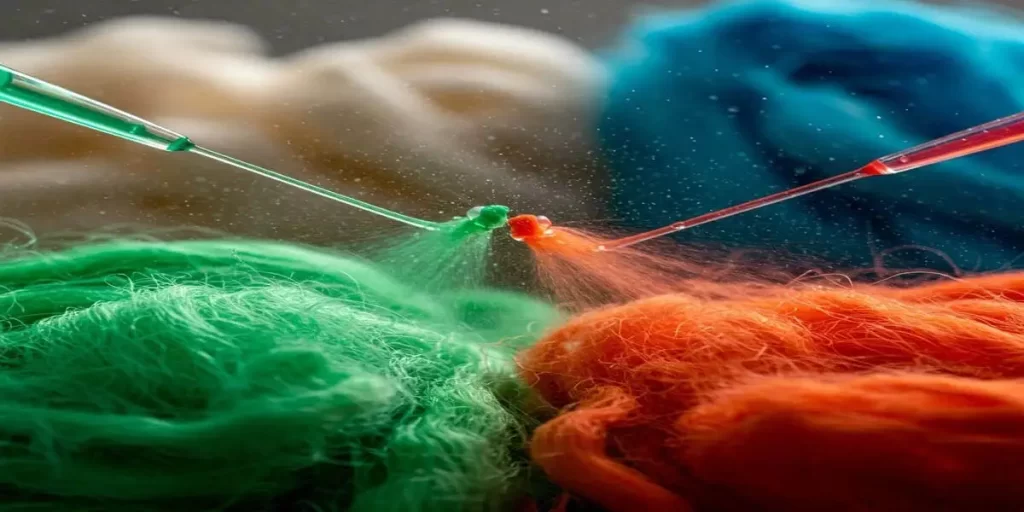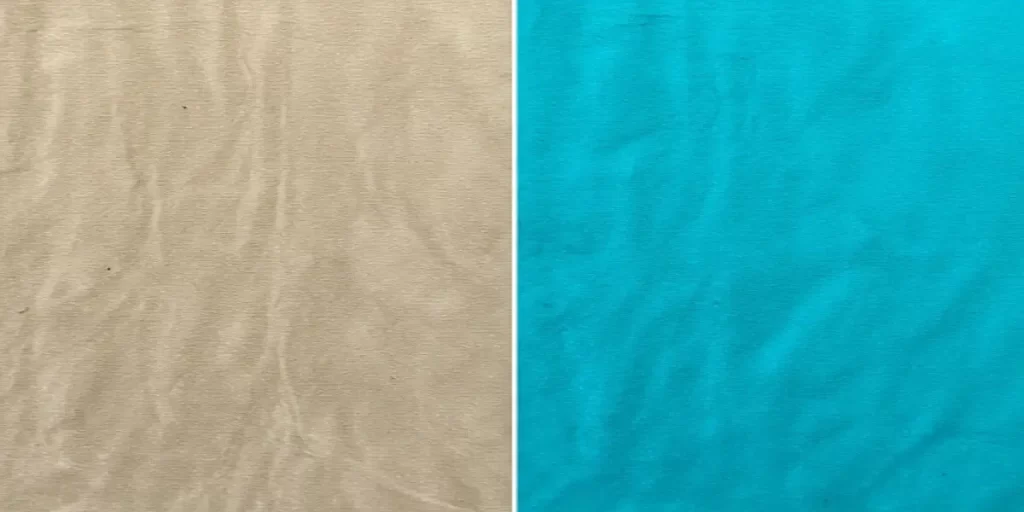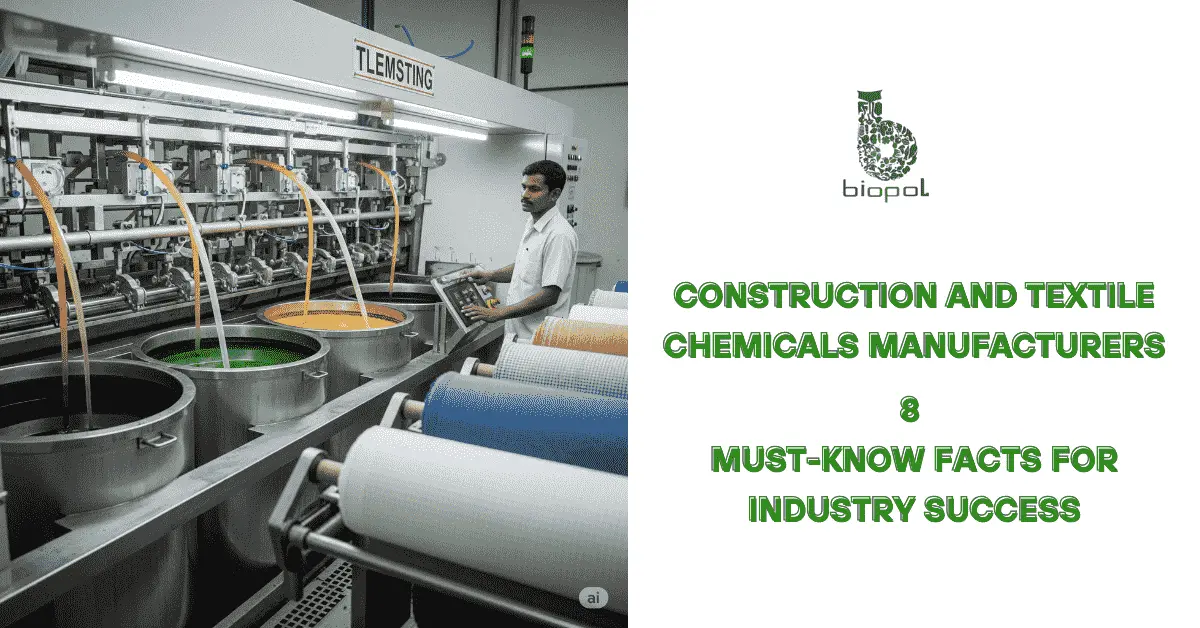
One must know how to use different chemicals textile chemicals if one is working in the textile chemicals industry. This action refers to the application of a variety of chemical substances throughout the textile manufacturing process to enhance fabric properties, improve color vibrancy, increase durability, and achieve specific finishes.
Table of Contents
The Critical Role of Chemicals in Modern Textile
One has to use different chemicals textile chemicals strategically to achieve essential fabric qualities in modern manufacturing. From fiber preparation to final finishes, these chemicals enhance strength, color, and functionality like water repellency or flame resistance. Without the varied application of textile chemicals, fabrics would lack the performance we rely on daily.
Pretreatment Chemicals
Use different chemicals in textile processing to effectively prepare fabrics for dyeing and finishing. Pretreatment chemicals play a crucial role in cleansing fibers, eliminating impurities, and creating a receptive surface for uniform dye uptake and strong finish adhesion—ensuring high-quality results in the final textile product.
Key challenges they address include:
- Fiber cleansing: Removing natural oils, waxes, and contaminants.
- Enhancing dye absorption: Promoting even and vibrant coloration.
- Improving finish adhesion: Supporting better bonding of functional finishes.
- Preventing defects: Reducing risks of patchy dyeing or inconsistent fabric texture.
Dyeing Auxiliaries & Color Control
Key Functions of Dyeing Auxiliaries:
- Improved Dye Penetration: Aids dye in soaking into fabric fibers evenly.
- Enhanced Dye Leveling: Prevents uneven color and streaks.
- Increased Fastness: Helps color resist fading and washing out.
- Fiber Protection: Shields fabric fibers during dyeing.
- Improved Efficiency: Can make the dyeing process faster.
Common Types of Dyeing Auxiliaries:
- Wetting and Penetrating Agents: Help dye solution wet and enter fibers.
- Dispersing Agents: Keep dye particles evenly spread.
- Leveling Agents: Create uniform color.
- Sequestering Agents: Counteract hard water issues.
- Antifoaming Agents: Prevent excess foam.
- Dye Fixing Agents: Enhance colorfastness.
- Migration Inhibitors: Stop dye from moving unevenly.
- Accelerators: Speed up dyeing.
- After-Washing Agents: Remove extra dye.
- Stripping Agents: Can remove dye for adjustments.
Printing chemicals are essential for precision, durability, and vibrancy in textile printing. Manufacturers use different chemicals textile chemicals tailored to each printing method for optimal results.
Key Techniques & Chemicals
| Technique | Chemicals Used |
| Screen Printing | Binders, thickeners, emulsifiers, fixers |
| Rotary Printing | Pigment emulsions, defoamers, crosslinkers |
| Digital Printing | Inks, pre-treatments, binders, wetting agents |
Performance Focus
- Color Fastness – Resists wash, rub, and light.
- Hand Feel – Soft, smooth finish via optimized binders.
- Sustainability – Low-VOC, biodegradable options meet ZDHC, GOTS, REACH.
Efficient printing demands precision chemistry balanced with eco and cost considerations.

Finishing for Feel & Function
In textile processing, manufacturers use different chemicals textile chemicals to enhance both the feel and function of fabrics during the finishing stage. These finishing agents play a vital role in improving softness, adding performance traits like wrinkle resistance, water repellency, or antimicrobial protection, and ensuring the fabric meets consumer expectations in comfort and durability.
Finishing agents play a vital role in the concluding stage of textile processing. Manufacturers use different chemicals textile chemicals to enhance softness, durability, and performance.
Key Benefits:
- Soft feel – silicone softeners
- Wrinkle-free – crosslinking agents
- Anti-static – surfactants for synthetics
- Repellency – water, oil, and stain finishes
- Hygiene – antimicrobial coatings
| Function | Chemical Used |
| UV Protection | Titanium dioxide |
| Flame Resistance | Phosphorus-based agents |
Eco-friendly options and smart textile innovations ensure fabrics meet both market and environmental standards, highlighting the strategic use of finishing chemicals in modern textile production.
Specialty Chemicals for Functional
Ever worn a jacket in the pouring rain and stayed completely dry? Or perhaps seen a fabric resist catching fire? That’s the power of specialty chemicals designed to give textiles specific functions. Manufacturers use different chemicals textile chemicals to meet specific performance needs like water repellency, flame resistance, and antimicrobial properties.
Functional Finishes & Key Chemicals
| Function | Chemicals Used |
| Waterproofing | Fluorocarbons, silicone emulsions, waxes |
| Flame Retardancy | Halogen-free phosphates, nitrogen compounds |
| Antimicrobial & Odor | Silver ions, triclosan, zinc-based agents |
Key Benefits:
- Enhanced safety – Fire protection for upholstery and uniforms
- Comfort & hygiene – Antibacterial coatings for activewear
- Weather protection – Water-resistant outerwear, tents, gear
These formulations must balance performance, durability, and eco-compliance.
Eco-friendly chemicals are essential in sustainable textile manufacturing, as they minimize environmental harm while maintaining high performance standards. Today’s producers use different chemicals textile chemicals that comply with global green standards.
Green Alternatives & Applications
| Application | Eco-Friendly Chemicals |
| Dyeing & Printing | Water-based inks, low-VOC binders |
| Finishing | Silicone-free softeners, biodegradable agents |
| Pretreatment | Enzyme-based scouring, peroxide bleach |
Benefits:
- Reduced toxicity – Safer for workers and ecosystems
- Lower emissions – Minimal VOC release and water usage
- Certifications – Meets GOTS, ZDHC, OEKO-TEX standards
Eco-chemistry is driving the future of responsible textile production.

Choosing the Right Chemicals
Choosing the right textile chemicals is crucial for achieving desired fabric performance, durability, and compliance. Manufacturers must use different chemicals textile chemicals tailored to specific processes and fabric types.
Selection Criteria & Considerations
| Factor | Key Considerations |
| Fabric Type | Natural, synthetic, or blends |
| End Use | Apparel, upholstery, technical textiles |
| Process Stage | Pretreatment, dyeing, printing, finishing |
| Eco Compliance | REACH, GOTS, ZDHC certifications |
Tips:
- Test compatibility with fiber and equipment
- Prioritize sustainability without compromising quality
- Optimize cost-performance balance for scalable production
Smart selection ensures functional, safe, and market-ready textiles.
Leading Suppliers & Brands
The textile chemical industry features trusted suppliers that provide high-performance products tailored to various applications. Top suppliers use different chemicals textile chemicals to meet global standards.
Leading Suppliers & Brands
| Supplier/Brand | Key Products |
| BASF | Dyes, softeners, anti-wrinkle agents |
| Huntsman | Flame retardants, textile finishes |
| Biopol Chemicals Limited | Silicone softeners, water repellents |
| Clariant | Sustainable dyeing solutions, printing chemicals |
| Archroma | Eco-friendly dyes, textile coatings |
Why Trust These Brands?
- Global Compliance – Meets REACH, ZDHC, GOTS standards
- Innovation – Advanced, eco-conscious formulations
- Performance – Consistent quality across applications
These brands lead the charge in providing sustainable and high-performance textile chemicals.
Conclusion
The right textile chemicals unlock fabric potential, transforming raw materials into high-performance textiles. If we start to use different chemicals textile chemicals correctly, manufacturers enhance strength, comfort, durability, and sustainability. From pretreatment to finishing, specialty chemicals ensure textiles meet functionality and eco-friendly standards. By choosing the right solutions, producers can create innovative, sustainable products that align with global standards, driving both performance and environmental responsibility in the evolving textile industry.
Frequently Asked Questions
1. What are the top 3 chemical companies in the world?
As of recent rankings based on revenue and global reach, the top 3 chemical companies are:
- BASF (Germany)
- Sinopec (China Petroleum & Chemical Corporation)
- Dow Inc. (United States)
These companies dominate the global chemical industry across various sectors including petrochemicals, specialty chemicals, and agricultural solutions.
2. Could you list the chemical substances employed within the textile industry?
The textile industry uses a wide range of chemicals, categorized as:
- Pre-treatment chemicals (e.g., desizing agents, scouring agents, bleaching agents)
- Dyeing and printing chemicals (e.g., dyes, dispersing agents, leveling agents)
- Finishing chemicals (e.g., softeners, water repellents, flame retardants, anti-microbial agents)
- Sizing and coating agents used in weaving and fabric strength enhancement
3. How big is the textile chemical market?
In recent years, the global textile chemicals market has been valued between USD 26 billion and USD 30 billion, with expectations of a compound annual growth rate (CAGR) of approximately 4% to 5% from 2024 to 2030. Growth drivers include increasing demand for technical textiles, eco-friendly formulations, and textile manufacturing in Asia-Pacific.
4. Which chemicals are used in dyeing?
Common chemicals used in textile dyeing include:
- Reactive dyes, acid dyes, disperse dyes
- Sodium carbonate and sodium hydroxide (for pH adjustment)
- Leveling agents and dispersing agents
- Salt and urea (for dye fixation and solubility)
5. Who is the biggest exporter of chemicals?
Germany has long held the position of the world’s leading chemical exporter, with the United States and China following closely behind.
These countries have robust chemical industries with a strong export orientation.
6. Who is the king of chemicals?
The phrase “King of Chemicals” is often used to describe Sulfuric Acid (H₂SO₄) due to:
- Its widespread industrial use
- Role as a key indicator of a country’s industrial capacity
- Essential applications in fertilizer production, petroleum refining, wastewater processing, and more
Also Read: Textile Chemicals: The Secret Sauce Behind Your Clothes
Also Read: Use Caustic Soda in Textile Chemicals: 3 Powerful Reactions, 8 Vital Roles
Also Read: Use Sulphuric Acid in Textile Chemicals: 7 Powerful Ways
Also Read: Use Polyester Resin Textile Chemicals: 4 Powerful Ways
Also Read: Use Hydrogen Peroxide in Textile Chemicals: 7 Powerful Ways to Boost Sustainability and Efficiency
Also Read: Use Formic Acid Textile Chemicals: 5 Ways to Achieve Enhanced Quality

